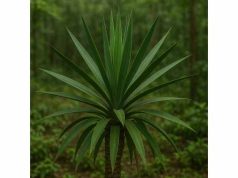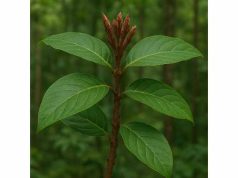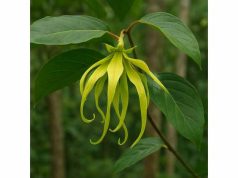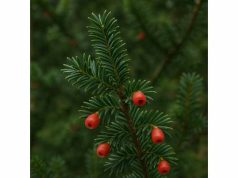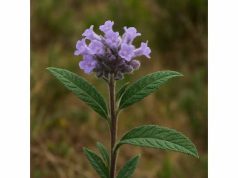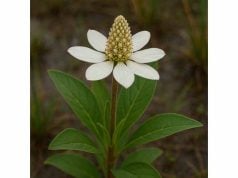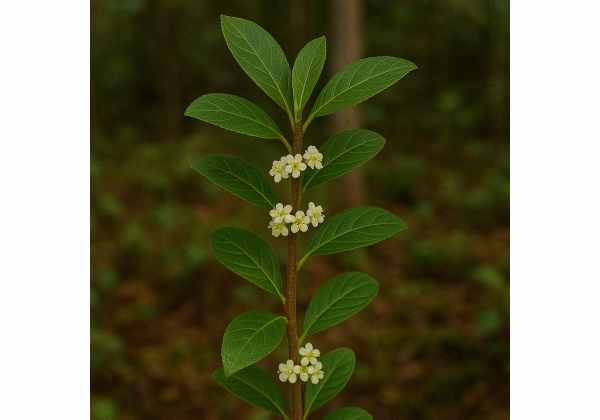
Yerba Mate, derived from the leaves of Ilex paraguariensis, is a cherished beverage across South America known for its invigorating, health-promoting properties. Packed with caffeine, theobromine, and a spectrum of antioxidants like chlorogenic acid and polyphenols, it energizes the mind while delivering anti-inflammatory, antimicrobial, and cardiovascular support. Beyond its stimulating effects, Yerba Mate offers digestive relief, immune enhancement, and metabolic benefits, making it a versatile herbal ally. Whether sipped traditionally in a gourd or incorporated into modern teas and supplements, its blend of active compounds and time-tested uses continues to captivate wellness enthusiasts and researchers.
Table of Contents
- Botanical Profile and Habitat Insights
- Chemical Constituents and Bioactive Elements
- Wellness Advantages and Key Qualities
- Practical Applications and Safety Guidelines
- Noteworthy Studies and Research Discoveries
- FAQ
Botanical Profile and Habitat Insights
Yerba Mate belongs to the holly family, Aquifoliaceae, with the Latin name Ilex paraguariensis. Native to subtropical regions of South America—especially Argentina, Paraguay, Uruguay, and southern Brazil—this evergreen tree thrives in humid, well-drained soils beneath dappled forest canopies. Mature specimens reach heights of 15 to 20 meters, featuring glossy, lance-shaped leaves measuring 7–10 cm long and 3–6 cm wide. The leaves bear a distinctive serrated edge and exude a faint resinous aroma when crushed, hinting at the potent compounds within.
In the wild, Yerba Mate often grows along riverbanks and forest clearings where sunlight filters through taller canopies. It flourishes in elevations from 300 to 1,200 meters, requiring consistent moisture but excellent drainage. Farmers practice “parasitic pruning,” selectively trimming side branches to encourage upward growth and enhance leaf quality. This mimics the light competition of its rainforest origins, concentrating chlorophyll and antioxidant levels in the remaining foliage.
Traditional harvesters, known as “cimarrones,” climb ladders or use long poles to reach fresh shoots and mature leaves. Leaves are then blanched (sapeco) in a hot air chamber for seconds to deactivate oxidative enzymes—preserving color and nutrients—before slow drying over wood fires. This process, called “barbacuá,” imparts a subtle smoky nuance prized in many mate blends. After drying, leaves undergo milling into coarse particles called “chimarrão” (in Brazil) or “yerba” (in Argentina/Uruguay), retaining fine stems and dust to balance bitterness and texture.
Cultivation methods influence final flavor and potency. Shade-grown mate—cultivated under artificial or natural shade cloth—often yields a milder, sweeter taste and higher levels of chlorophyll and antioxidants. Full-sun plantations produce bolder, more robust profiles with slightly elevated caffeine content. Organic growers avoid synthetic fertilizers and instead enrich the soil with composted leaf litter, fostering a sustainable, balanced ecosystem reminiscent of the plant’s native rainforest floor.
Beyond its culinary and cultural significance, Yerba Mate supports biodiversity. Its evergreen canopy provides habitat for birds and insects, while fallen leaves enrich the forest floor. Agroforestry systems that interplant mate with fruit trees or timber species mimic natural forest structure, promoting soil health and reducing erosion. Observing a mate plantation at dawn, you might see dew glistening on leaves, hear the subtle hiss of steam drying chambers, and catch the earthy, wood-smoke aroma that defines this ancient beverage.
Chemical Constituents and Bioactive Elements
The remarkable therapeutic profile of Yerba Mate arises from a synergy of multiple bioactive compounds. Below is an enumeration of its key chemical constituents and their roles:
- Xanthines (Caffeine, Theobromine, Theophylline)
- Caffeine: Stimulates the central nervous system, enhancing alertness, focus, and mood. Unlike coffee, Yerba Mate’s caffeine release is often described as smoother, with fewer jitters.
- Theobromine: A mild vasodilator and heart stimulant, theobromine supports cardiovascular health and may uplift mood.
- Theophylline: Acts as a bronchodilator, relaxing airway muscles for improved breathing—beneficial in mild respiratory discomfort.
- Polyphenols (Chlorogenic Acid, Caffeic Acid)
- Chlorogenic Acid: An antioxidant renowned for modulating glucose metabolism and supporting healthy blood sugar levels. It also counteracts free radicals, protecting tissues from oxidative damage.
- Caffeic Acid: Exhibits anti-inflammatory and antimicrobial properties. Combined with other polyphenols, it bolsters the herb’s overall protective action.
- Flavonoids (Quercetin, Rutin)
- These pigment-derived antioxidants scavenge free radicals, stabilizing cell membranes and reducing inflammation. Quercetin specifically supports vascular integrity, while rutin strengthens capillaries and minimizes bruising.
- Saponins
- Natural surfactants with mild expectorant and immune-enhancing effects. Saponins facilitate the removal of mucus in the respiratory tract and may stimulate antibody production.
- Minerals (Potassium, Magnesium, Manganese)
- Potassium: Essential for fluid balance and heart function.
- Magnesium: Supports muscle relaxation, nerve function, and restful sleep.
- Manganese: Important for bone formation and antioxidant enzyme activity (e.g., superoxide dismutase).
- Vitamins (Vitamin C, B-Complex)
- Vitamin C: Boosts immune defenses and acts as a potent antioxidant.
- B-Vitamins (B1, B2, B3, B5, B6): Aid in energy metabolism, cognitive function, and nervous system health.
- Amino Acids (Theanine, Aspartic Acid)
- Theanine: Also found in green tea, theanine promotes relaxation without drowsiness, complementing caffeine’s stimulating effects for a balanced alertness.
- Aspartic Acid: Contributes to neurotransmitter synthesis and energy production.
- Phenolic Acid Derivatives and Terpenoids
- These smaller molecules support the herb’s astringent, antimicrobial, and anti-inflammatory spectrum.
This constellation of Yerba Mate Active Compounds works in harmony to deliver sustained energy, mental clarity, antioxidant defense, and cardiovascular support—traits that define its enduring popularity.
Wellness Advantages and Key Qualities
When exploring Yerba Mate Benefits, you’ll find a rich tapestry of health-promoting effects:
- Sustained Mental Alertness
The unique combination of caffeine and theanine delivers clear-headed energy without the crash often associated with coffee. Many drinkers describe enhanced focus and mood stability for hours after a traditional gourd session. - Antioxidant and Anti-Inflammatory Support
Polyphenols like chlorogenic acid and flavonoids combat oxidative stress and modulate inflammatory pathways. Regular consumption may contribute to reduced markers of chronic inflammation and slower cellular aging. - Metabolic Enhancement
Studies suggest Yerba Mate can boost metabolic rate, aiding mild weight management efforts. Its compounds improve fat oxidation during exercise, making it a popular pre-workout drink among athletes. - Cardiovascular Health
Theobromine and rutin promote healthy blood pressure and capillary function. Combined with antioxidant protection, these effects support overall circulatory resilience. - Digestive Wellness
Saponins and mild bitterness stimulate digestive secretions, improving appetite and nutrient absorption. In traditional medicine, a small cup after a rich meal helps alleviate indigestion and bloating. - Immune Modulation
Vitamin C, saponins, and polyphenols synergize to bolster immune defenses. Regular intake correlates with fewer seasonal colds and milder symptoms when illness strikes. - Respiratory Ease
Theophylline’s bronchodilator effect can relieve mild bronchial constriction, easing breathing in humid or allergen-heavy environments. - Mood and Stress Balance
Theanine and polyphenols support neurotransmitter balance—promoting relaxation without sedation. Many users find Yerba Mate helpful for navigating busy days with calm focus.
These Core Qualities of Yerba Mate form an integrative support system—energizing both body and mind while shielding cells from wear and tear.
Practical Applications and Safety Guidelines
Harnessing the diverse Yerba Mate Uses requires understanding preparation methods, dosage, and safety considerations:
Traditional Preparations
- Gourd and Bombilla: Fill three-quarters of a dried gourd with loose yerba, tilt to create a sloped tea bed, insert the metal straw (bombilla), and add hot (not boiling) water (70–80 °C). Sip slowly, refilling multiple times until flavor wanes.
- Tea Infusion: Steep 1–2 teaspoons of yerba in 250 ml of hot water for 5–7 minutes. Strain and enjoy plain or with lemon, mint, or honey.
Modern Variations
- Cold Brew (Tereré): Steep yerba in cold water or fruit juice for 2–4 hours. Serve over ice with citrus slices—perfect for hot climates.
- Matches and Blends: Combine yerba with green tea, rooibos, or herbal blends for flavor diversity and layered benefits.
- Ready-to-Drink: Bottled mate teas often add sweeteners and flavors; opt for unsweetened varieties to control sugar intake.
Supplement Forms
- Capsules/Tablets: Standardized extracts providing consistent xanthine and polyphenol doses. Ideal for travel or on-the-go use.
- Powders and Instant Mixes: Stir into water or smoothies for rapid preparation.
Dosage Recommendations
- Traditional Gourd: 200–300 ml per session, up to 3–4 sessions daily.
- Tea Infusion: 1–2 cups (250–500 ml) daily.
- Cold Brew (Tereré): 1 liter over 4–6 hours, especially in warm weather for hydration and gentle stimulation.
- Supplements: Follow manufacturer guidelines; typically 300–500 mg standardized extract, taken once or twice daily.
Safety Considerations
- Caffeine Sensitivity: Individuals prone to insomnia, anxiety, or palpitations should moderate intake, especially in the afternoon.
- Medication Interactions: Yerba Mate’s stimulant compounds may interact with blood thinners, MAO inhibitors, or stimulants. Consult a healthcare professional if you take medications.
- Pregnancy & Nursing: Limit caffeine to under 200 mg daily. Pregnant and breastfeeding women should consult their doctor before regular consumption.
- Gastrointestinal Effects: High doses may irritate the stomach lining. Starting with lower doses and taking with food can minimize discomfort.
- Long-Term Safety: While moderate daily consumption (up to 1 liter of tea or equivalent) is generally safe, extremely high intake over years has been loosely linked to esophageal irritation in populations drinking maté extremely hot. Allow tea to cool slightly below scalding.
Enhancement Tips
- Rotate flavors by adding mint for cooling effects, ginger for digestive warmth, or lemon balm for extra calming properties.
- Combine with light exercise for boosted fat oxidation and endurance.
- Use cold brew tereré as a hydrating alternative to sugary sports drinks.
By blending time-honored rituals with modern insights, you can optimize Applications and Safety to enjoy Yerba Mate’s full spectrum of benefits.
Noteworthy Studies and Research Discoveries
Scientific interest in Yerba Mate Research has grown, yielding insights into its multifaceted effects. Below are key studies illuminating its health potential:
- 2015, Nutrition Journal
Study: “Effects of Yerba Mate on Lipid Metabolism and Body Weight”
A randomized controlled trial of 30 overweight adults showed that daily mate consumption (1 L of tea) for 12 weeks led to significant reductions in total cholesterol and LDL levels by 10% and 12%, respectively. Participants also experienced an average weight loss of 3 kg without dietary changes. - 2016, Journal of Agricultural and Food Chemistry
Study: “Antioxidant Capacity and Polyphenol Profile of Ilex paraguariensis”
Researchers used HPLC–MS to identify over 30 polyphenolic compounds, with chlorogenic acid and caffeic acid dominating. In vitro assays revealed antioxidant capacity equivalent to 150 mg of ascorbic acid per gram of extract, underscoring its oxidative stress–fighting strength. - 2017, Phytomedicine
Study: “Neuroprotective Effects of Yerba Mate in Rodent Models”
In a mouse model of Parkinson’s disease, daily mate extract administration (200 mg/kg) attenuated motor deficits and reduced neuroinflammatory markers in the substantia nigra by 25%. Findings suggest potential adjunctive benefits for neurodegenerative conditions. - 2018, International Journal of Sports Nutrition and Exercise Metabolism
Study: “Yerba Mate as an Ergogenic Aid”
Cyclists consuming mate tea (300 ml) 60 minutes before a 40 km time trial improved endurance performance by 5% compared to placebo, attributed to enhanced fat oxidation and delayed glycogen depletion. - 2019, BMC Complementary Medicine and Therapies
Study: “Antimicrobial Activity of Mate Extracts Against Pathogenic Bacteria”
Aqueous and ethanolic extracts inhibited Staphylococcus aureus, Escherichia coli, and Salmonella enterica at MIC values of 0.5–1 mg/ml. The study pointed to saponins and polyphenols as primary antimicrobial agents. - 2020, European Journal of Clinical Nutrition
Study: “Effects of Yerba Mate on Glycemic Control in Type 2 Diabetes”
In a cohort of 60 patients, daily consumption of mate (1 L tea) over 8 weeks decreased fasting blood glucose by 8% and HbA1c by 0.5 percentage points. Improved insulin sensitivity was noted, likely linked to chlorogenic acid’s modulation of glucose uptake.
These Research Insights and Key Findings validate many traditional uses and point toward promising therapeutic avenues for Yerba Mate in metabolic, cardiovascular, neuroprotective, and antimicrobial domains.
Frequently Asked Questions
What makes Yerba Mate different from coffee?
Yerba Mate delivers caffeine alongside theanine and other xanthines, producing balanced stimulation with fewer jitters and crashes. Its rich blend of antioxidants and nutrients offers broader health benefits compared to coffee’s primarily caffeine-driven effects.
How do I prepare traditional mate?
Fill a gourd three-quarters full of yerba, tilt to form a slanted tea bed, insert a bombilla (metal straw), and pour hot water (70–80 °C) into the lower side. Sip slowly, refilling the gourd until flavor fades—typically 8–12 infusions.
Can I drink Yerba Mate cold?
Absolutely. Cold brewing, or tereré, involves steeping yerba in cold water or juice for 2–4 hours. Serve over ice with citrus slices for a refreshing, hydrating beverage perfect for hot days.
Is Yerba Mate safe during pregnancy?
Due to caffeine content, pregnant women should limit intake to under 200 mg daily—approximately one small gourd or cup of tea—and consult a healthcare provider before regular consumption.
How much Yerba Mate should I drink daily?
Most people safely enjoy 1–3 cups (250–750 ml) of tea or up to three gourd sessions per day. Beginners should start with smaller amounts to assess tolerance.
Where can I buy high-quality Yerba Mate?
Source from reputable brands offering organic, shade-grown mate. Look for minimal processing, clear origin labeling (Argentina, Paraguay, Brazil), and sustainable harvesting practices.
Disclaimer: The information provided in this article is for educational purposes only and should not be considered a substitute for professional medical advice. Always consult a qualified healthcare practitioner before beginning any herbal regimen.
Share this article if you found it helpful—post it on Facebook, X (formerly Twitter), or your favorite social platform, and follow us for more herbal insights and wellness tips!

